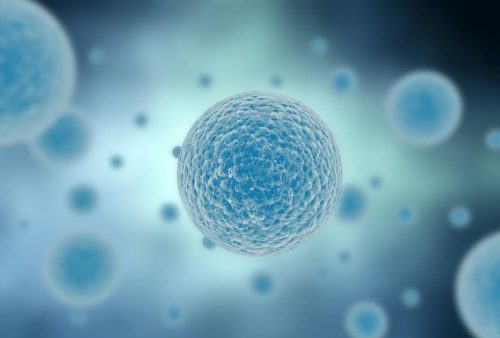When we take a drug, it flows through our bloodstream before entering the cells in our bodies–where the action happens. Most drugs that are currently used are small organic molecules that perform specific functions according to their chemical composition and shape. However, there is also substantial interest in using larger proteins and peptides as therapies for diseases. Unlike most small organic molecules, which are small enough to cross cell membranes, larger proteins or enzymes–molecular machines which have many more functions than small organic molecules–are tougher to shuttle across membranes inside cells. In a recent study published in the Proceedings of the National Academy of Sciences, a team led by Yale professor Alanna Schepartz uncovered new pathways and mechanisms that help proteins enter cells.
Schepartz focused on two classes of proteins–cell-penetrating
peptides (CPPs) and cell-permeant miniature proteins (CPMPs)–and the mechanism
they use to enter the cell. In the study, Schepartz hoped to shed light on some
of the unknown mechanisms employed by CPPs and CPMPs to enter cells. Both CPPs
and CPMPs use what is called an endocytic pathway, taking advantage of the
built-in cellular machinery for bringing larger molecules into the cell. During
endocytosis, the cellular membrane surrounds the target molecule, pinches off,
and creates an endosome inside the cell. This process is like the surface of a
bubble pinching off inwards to become a new bubble inside the original bubble.
Though scientists knew CPPs and CPMPs used the endocytic pathway, they were
still unsure how CPPs and CPMPs are able to escape the endosome and enter the
cellular fluid to fulfill their roles.
Schepartz first tested the hypothesis that CPPs and CPMPs simply rupture the endosome to escape. The researchers used fluorescent tags to look for signs of endosome damage in the cell and locate ruptured endosomes. They discovered that the endosomes in cells that had taken in CPPs and CPMPs were relatively unharmed. The researchers then tested for signs of leakage from the endosome, which came back negative. Based on these results, the researchers were certain that endosomes are not harmed when the CPPs and CPMPs are released into cells.
The team then decided to look for genes that could be regulating this release of proteins into the cell. They implemented a technique using small interfering RNAs (siRNAs), which allow researchers to “turn off” certain genes and observe the effects. After testing genes across the genome, Schepartz found that if VPS39, a gene that codes for a piece of the homotypic fusion and protein-sorting (HOPS) complex, was turned off, CPPs and CPMPs could not leave the endosome and enter the cell. They compared HOPS to similar complexes, but only turning off HOPS prevented proteins from leaving the endosome.
Schepartz and her team then decided to look at the effects of CPPs and CPMPs on the function of HOPS. Using a fluorescence technique that looks for the products of HOPS’s reactions, Schepartz found that HOPS remained active even with delivery of CPPs and CPMPs. Finally, using fluorescent microscopy, the researchers found that HOPS functions by acting as a guide for CPPs and CPMPs, directing them to a class of endosome, called Lamp1, which has factors which facilitate the escape of proteins.
Though the confirmation of HOPS as a key player in cell entry for proteins is a major breakthrough, further research is needed to understand the final steps of entry into the cell–particularly, how CPMPs escape from Lamp1 endosomes. Nevertheless, Schepartz’s research has great therapeutic potential and furthers our understanding of movement into and out of cells. As researchers learn more about these mechanisms, intricate molecular machines may replace small organic chemicals in medicine.

